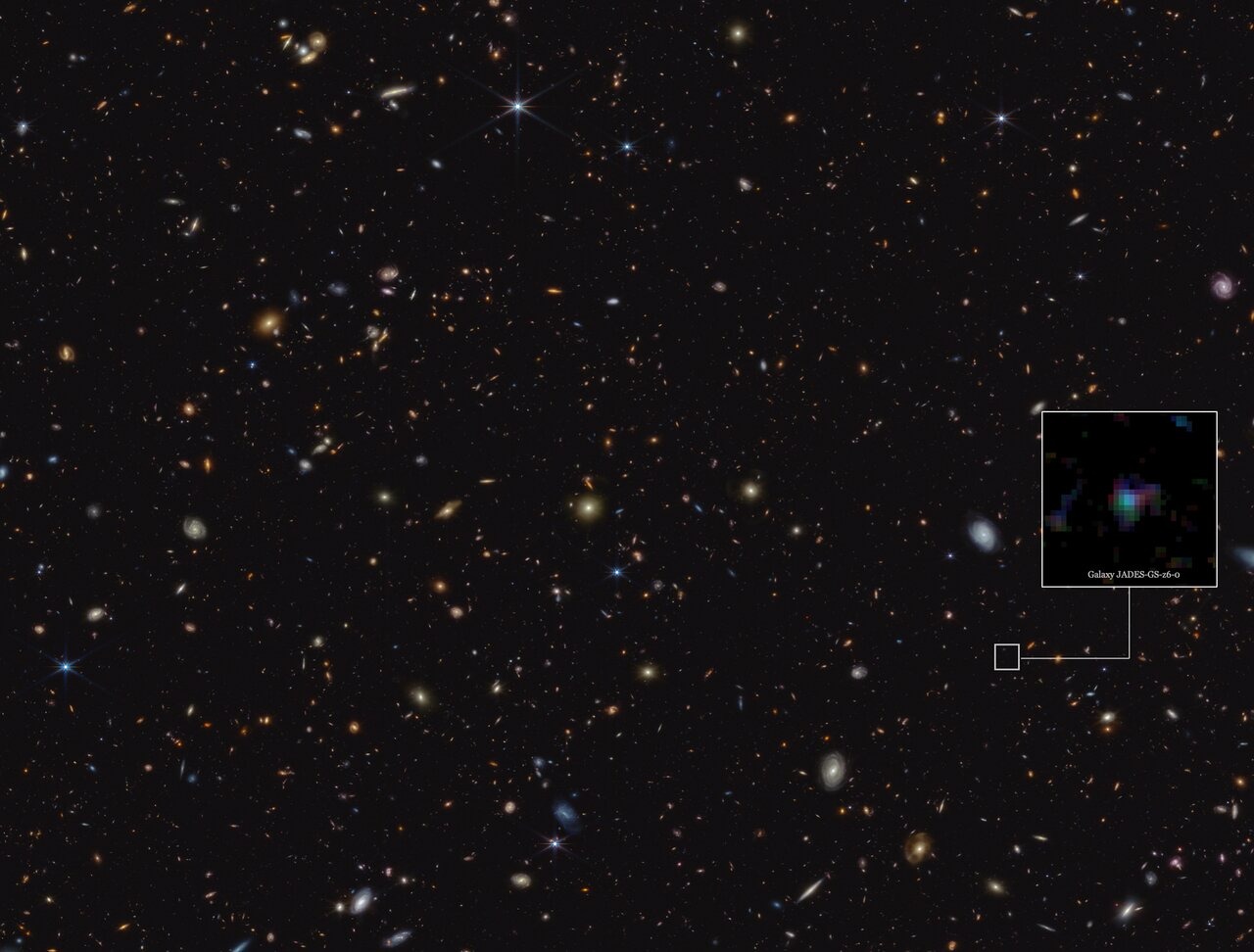Dust may seem like a boring and uninteresting topic. But for astronomers, it is valuable, fascinating and full of unsolved secrets. Recently, researchers used the James Webb Space Telescope (JWST) to detect dust particles of the early Universe that could have been formed from the oldest supernovae in the Universe.

James Webb is a powerful tool because it allows researchers to detect extremely distant, and therefore extremely old, galaxies. With the help of JWST, it is possible not only to identify these early galaxies but also to determine their spectra, which reveal their chemical composition. As part of a study called the JWST Advanced Deep Extragalactic Survey or JADES, the NIRCam instrument took a picture of an area of the sky called GOODS-South. The researchers used the instrument to study the spectra of early galaxies such as JADES-GS-z6.
Using a spectrograph, the researchers found evidence of the presence of carbon-rich grains in dust clouds. This is similar to the findings of compounds called polycyclic aromatic hydrocarbons (PAHs). However, these complex compounds could not have formed so early in the Universe.
The study is complicated by the fact that the spectra may look similar for different chemicals. In this case, perhaps the tiny difference that the researchers found is important: their feature is most noticeable at a wavelength of 226.3 nm, while PAHs are usually most noticeable at a wavelength of 217.5 nm. This is a very small discrepancy, but it may be due to the mixture of particles present in the dust.
“This is a slight shift in the wavelength where the absorption is strongest. The error indicates that we may be seeing a different mixture, for example, graphite- or diamond-like grains,” said lead author of the study Joris Witstok from the University of Cambridge. Witstok explained that this mixture could have appeared due to early supernovae or large stars, called Wolf-Rayet stars.
Since starting work with James Webb last year, astronomers have noted that early galaxies seem to be significantly more numerous and massive than anyone imagined, which, together with evidence such as this discovery, forces them to rethink their assumptions about the early Universe.
“This discovery means that early galaxies in the young universe are evolving much faster than we ever expected,” said researcher Renske Smit from Liverpool John Moore University.
Earlier, we reported on how the most expensive observatory celebrated the first anniversary of its work.
The study is published in the journal Nature
Follow us on Twitter to get the most interesting space news in time
https://twitter.com/ust_magazine
